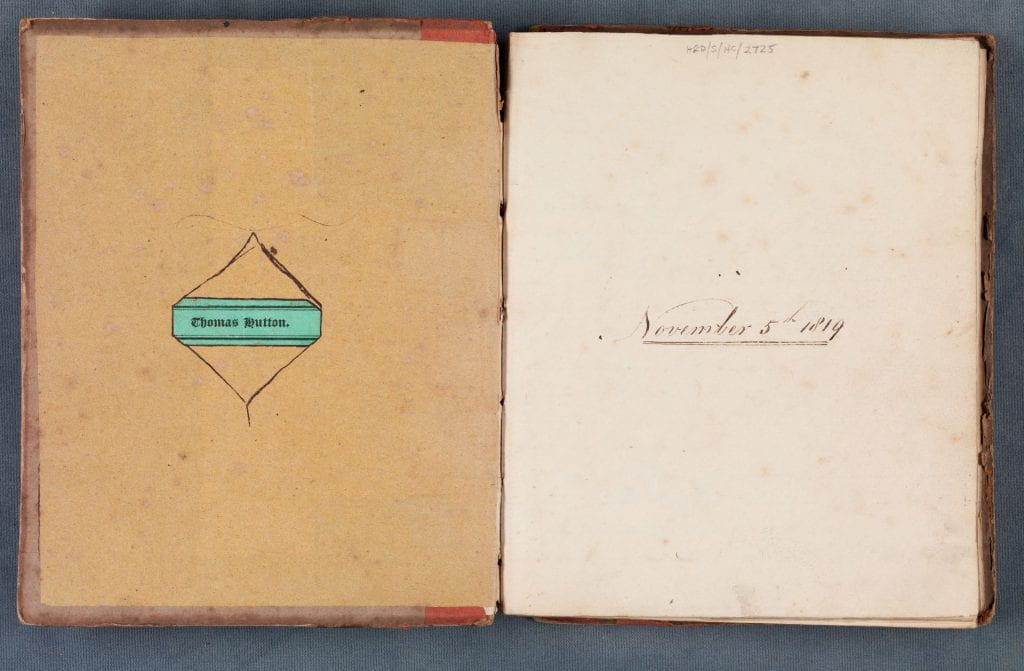
A commonplace book kept by Thomas Sutton starting on 5 November 1819 in which he records anecdotes, quotations, epigrams, drinking toasts, many directly related to his home Nottingham and indicate the pride he feels in its history and people. He begins with a passage from John Blackner’s “The history of Nottingham” (1815) extolling the virtue of Nottingham men with a passage recounting an episode during the Glorious Revolution of 1688, followed by several passages from a range of sources in praise of Nottingham and its men, prominent political figures — Lord Grafton, Lord Dundas, Thomas Paine — and stories of local personalities. Nottingham ale warrants several pages of discourse. He provides a lengthy account of a canal boat accident, which is illustrated with a line-drawn plan followed by an extract from Christian Ignatiyus Latrobe’s Journal of a visit to South Africa in 1815 and 1816 about the destruction done by wolves at Groenekloof and the attempt of the missionaries and the native people to hunt them down and a confrontation with a tiger. Also included are copies of four letters sent by his uncle Charles Peck relating to his volunteering for an expedition to the Congo with Major Peddie, his trip along the River Gambia to Senegal, and a letter from Sierra Leone announcing his uncle’s death with a discussion of the money due him from the expedition. The remaining bulk of the volume contains excerpts from The Nottingham Review, toasts, poems by Pope, Thomas Paine, Robert Burns, Thomas Moore; comical stories as well as political events including the death of King George III. He provides a detailed, alphabetic list of the towns, boroughs, and remarkable villages in England and Wales. He relates a story about a wager laid by Colly Cibber and Pope; a woman named Jenny Hickling of Nottingham, bedridden for 61 years and other stories that piqued his attention. His interest in Africa continues in 1823 when he copies several pages from Campbell’s Travels in Africa.
- Author: Sutton, Thomas, author.
- Title: Thomas Sutton commonplace book : manuscript.
- Production: Nottingham, England, 1819-1826.
Catalog Record
LWL Mss vol. 266
Acquired July 2021
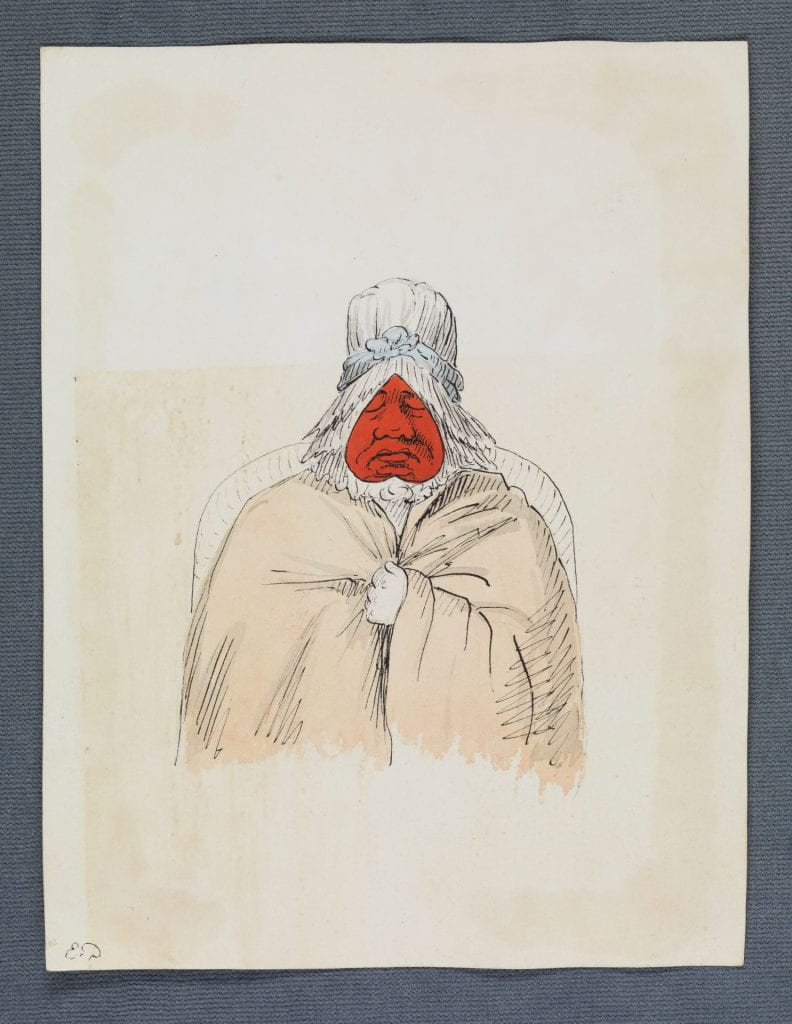
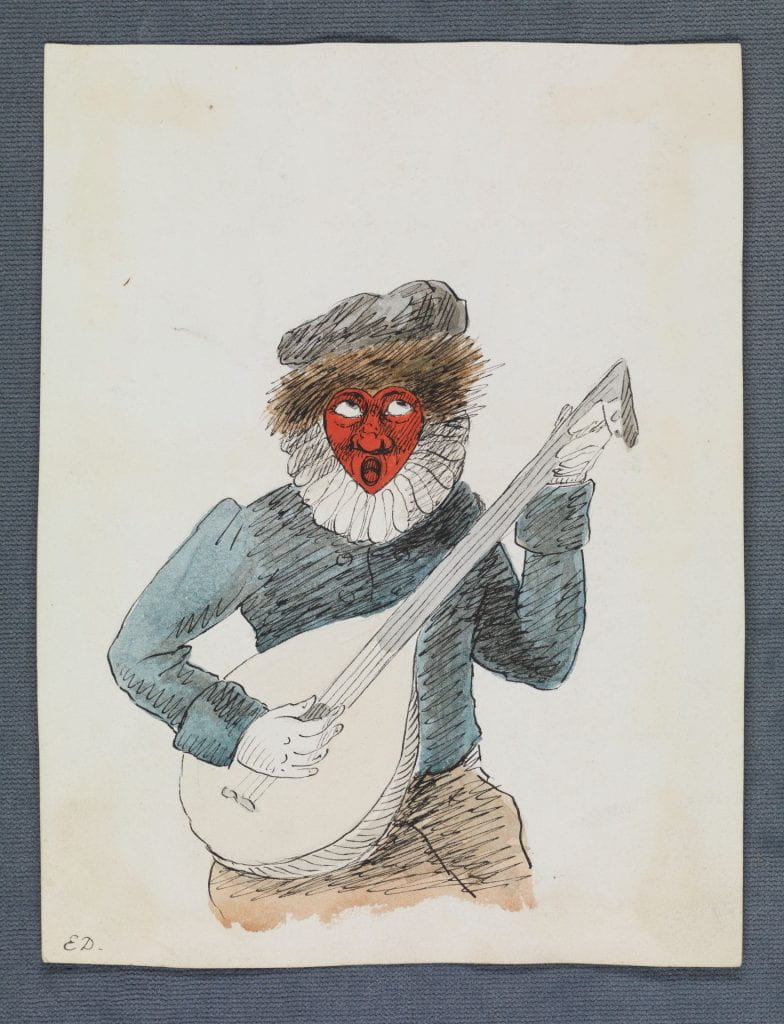

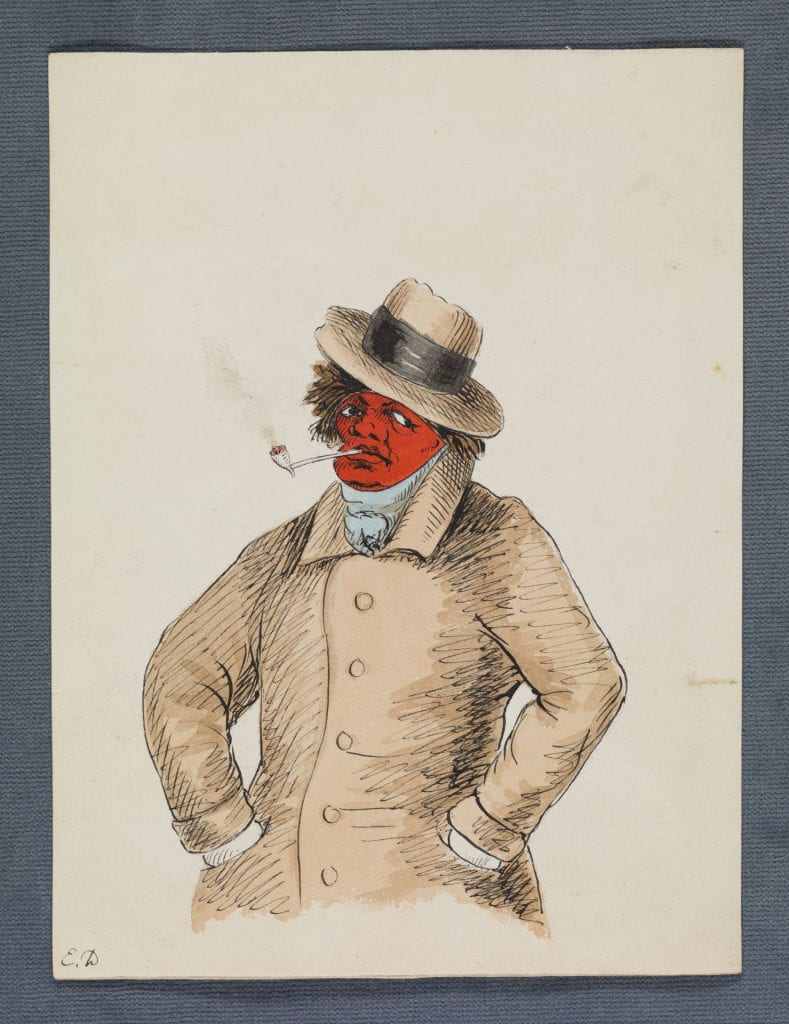




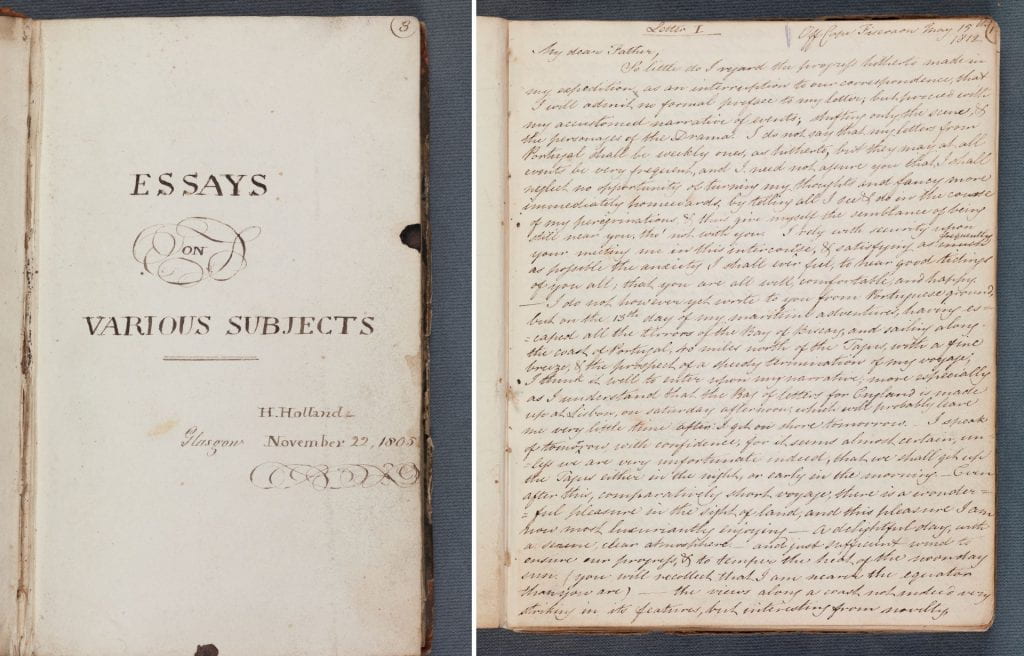



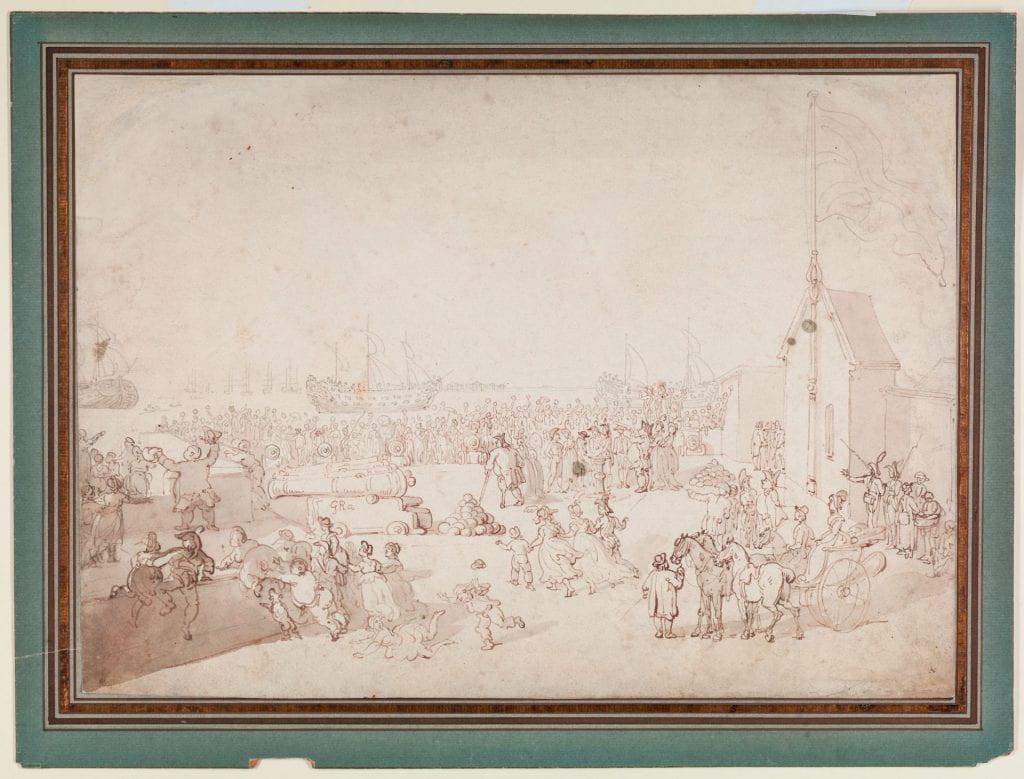 Unsigned; attributed to Rowlandson.
Unsigned; attributed to Rowlandson. Four sketches depicting scenes from accounts published in periodicals of the early 1820s, including The Mirror of Literature, Amusement and Instruction, volume I, 1822-23. The drawing ‘Janvier About to Kill the Indian Who had Relieved His Hunger’ illustrates the tale of Charles Janvier, which was was first published in John Long’s Voyages and Travels of an Indian Interpreter and Trader, 1791. The Mirror published an abridged version in November 1822. Janvier and two other servants had been sent by their master, Mr. Fulton, to catch supplies of meat and fish. Saved from hunger by a passing native Canadian who gives them food, Janvier kills and eats the stranger, a fate he later inflicts on one of his fellow servants. Volume I of The Mirror also recounts the story of the ‘Rescue of the Emperor Basilius Maredo’, the final sketch in this volume. The Emperor, snagged by a stag whilst hunting, is saved by the sword of a servant who is subsequently sentenced to death for drawing his sword in the presence of the Emperor. The tale of the first sketch, ‘Sultan Mahamoud punishing a Ravisher’, is told in Knapp and Baldwin’s Newgate Calendar, 1824. The final sketch, ‘A Miser Distracted’, appears to be a depiction of Aesop’s fable ‘The Miser and his Gold’, in which a miser concentrates all his wealth into one lump of gold which he buries before it is stolen from him.
Four sketches depicting scenes from accounts published in periodicals of the early 1820s, including The Mirror of Literature, Amusement and Instruction, volume I, 1822-23. The drawing ‘Janvier About to Kill the Indian Who had Relieved His Hunger’ illustrates the tale of Charles Janvier, which was was first published in John Long’s Voyages and Travels of an Indian Interpreter and Trader, 1791. The Mirror published an abridged version in November 1822. Janvier and two other servants had been sent by their master, Mr. Fulton, to catch supplies of meat and fish. Saved from hunger by a passing native Canadian who gives them food, Janvier kills and eats the stranger, a fate he later inflicts on one of his fellow servants. Volume I of The Mirror also recounts the story of the ‘Rescue of the Emperor Basilius Maredo’, the final sketch in this volume. The Emperor, snagged by a stag whilst hunting, is saved by the sword of a servant who is subsequently sentenced to death for drawing his sword in the presence of the Emperor. The tale of the first sketch, ‘Sultan Mahamoud punishing a Ravisher’, is told in Knapp and Baldwin’s Newgate Calendar, 1824. The final sketch, ‘A Miser Distracted’, appears to be a depiction of Aesop’s fable ‘The Miser and his Gold’, in which a miser concentrates all his wealth into one lump of gold which he buries before it is stolen from him.